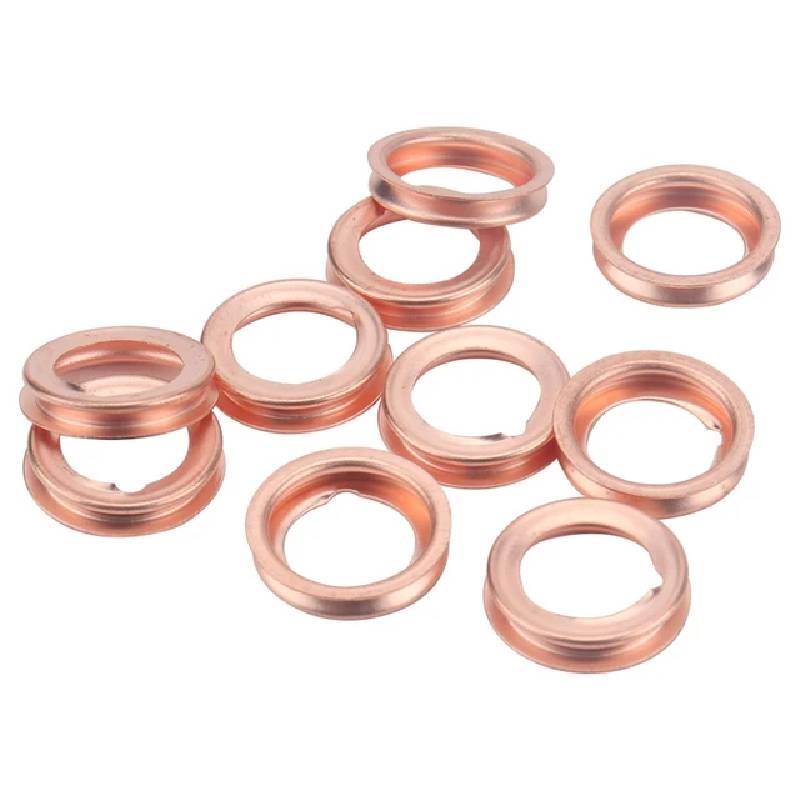Understanding Transmission Oil Pump Seal Importance and Maintenance Tips for Optimal Performance
Understanding Transmission Oil Pump Seal Importance and Maintenance
The transmission oil pump seal plays a crucial role in the efficient functioning of a vehicle's transmission system. This component is designed to maintain the integrity of the transmission fluid by preventing leaks, ensuring that the right amount of fluid is sent throughout the transmission. Understanding its function, importance, and maintenance can help vehicle owners preserve the longevity and performance of their vehicles.
What is a Transmission Oil Pump Seal?
The transmission oil pump seal is a specialized sealing component located at the interface between the oil pump and the transmission housing. Its primary function is to contain the transmission fluid within the pump, preventing any escape into the surrounding environment. The seal is typically made of high-quality materials such as rubber or synthetic elastomers, which can withstand the high pressure and temperature fluctuations that the transmission system experiences during operation.
Importance of the Transmission Oil Pump Seal
1. Leak Prevention One of the most critical functions of the transmission oil pump seal is to prevent leakage. If the seal deteriorates or becomes damaged, transmission fluid can leak out. This not only reduces the amount of fluid available for proper lubrication and cooling but can also lead to significant damage to transmission components due to overheating or inadequate lubrication.
2. Maintaining Pressure The seal helps maintain the necessary pressure within the transmission system. Proper fluid pressure is essential for the effective engagement and disengagement of clutches and bands within the transmission. If pressure is lost due to a seal leak, it can result in poor transmission performance, shifting problems, and ultimately, transmission failure.
3. Fluid Contamination Prevention The transmission oil pump seal also acts as a barrier that prevents dirt, debris, and moisture from entering the transmission system. Contaminated fluid can cause wear and tear on internal components, leading to premature transmission failure. A good seal helps ensure the longevity and reliability of your transmission system.
Signs of a Failing Transmission Oil Pump Seal
transmission oil pump seal

As with any vehicle component, the transmission oil pump seal can wear out over time. Recognizing the signs of a failing seal early on can help you avoid more extensive damage and costly repairs. Common indications of a failing transmission oil pump seal include
- Fluid Leaks The most obvious sign is visible transmission fluid pooling on the ground underneath the vehicle. Transmission fluid is usually reddish in color, so any leaks should be checked immediately. - Poor Shifting Performance If you notice that your vehicle is having difficulty shifting gears or is experiencing delayed engagement, this could be a result of lost fluid pressure due to a compromised seal.
- Burning Smell Overheating can occur when transmission fluid is low due to a leak. If you detect a burning smell, this could indicate that your transmission is running hotter than normal, which may damage internal components.
Maintenance and Replacement
Regular maintenance can extend the lifespan of your transmission oil pump seal. It’s advisable to have the transmission fluid checked and replaced at regular intervals, as per the manufacturer’s recommendations. Additionally, during routine inspections, a mechanic should examine the seal for signs of wear or damage.
If you determine that the transmission oil pump seal needs replacement, it’s essential to use high-quality parts that meet or exceed manufacturer specifications. An experienced technician should handle the replacement, ensuring proper installation to prevent future leaks.
Conclusion
In conclusion, the transmission oil pump seal is a vital component of a vehicle's transmission system. It is responsible for preventing leaks, maintaining pressure, and protecting the fluid from contamination. Regular maintenance and prompt attention to symptoms of seal failure can help ensure your transmission operates smoothly and prolong its lifespan. Understanding the importance of this component can empower vehicle owners to take the necessary steps to care for their transmissions effectively.
-
The Ultimate Guide to Car Repair Kits: Tools and Essentials Every Driver Should Own
News Aug.01,2025
-
The Complete Guide to Oil Pan Gaskets: Sealing Engine Leaks the Right Way
News Aug.01,2025
-
Preventing Oil Leaks: A Complete Guide to Oil Pan Gaskets and Drain Seals
News Aug.01,2025
-
Everything You Need to Know About Oil Pan Gaskets and Drain Plug Seals
News Aug.01,2025
-
Essential for Car Owners: How to Use a Car Repair Kit to Deal with Minor Breakdown
News Aug.01,2025
-
Comprehensive Guide to Engine Oil Sump Gaskets and Related Seals
News Aug.01,2025
-
The Ultimate Guide to Boat Propeller Bearings and Trailer Wheel Bearings
News Jul.31,2025
Products categories















